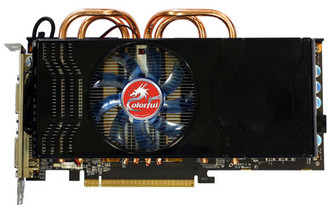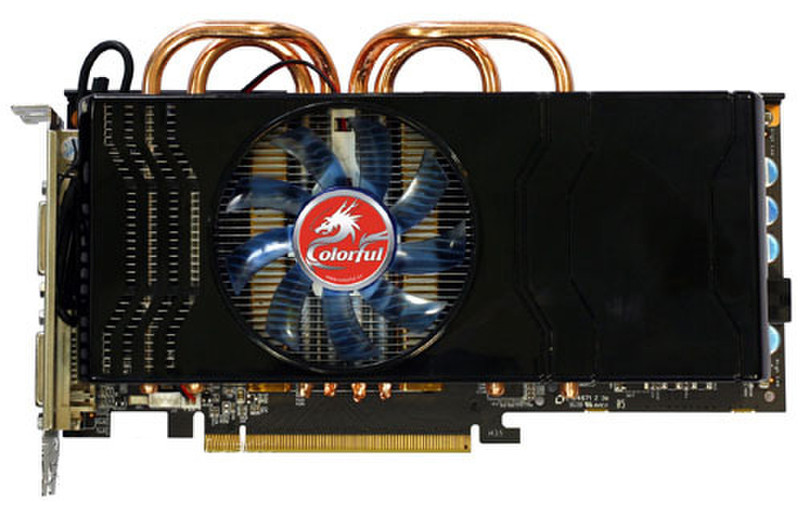Catalog
-
Catalog
- Antiquitäten & Kunst
- Auto & Motorrad: Fahrzeuge
- Baby
- Business & Industry
- Bücher
- Camping & Outdoor
- Feinschmecker
- Garden & patio
- Haustierbedarf
- Heimwerken & Garten
- HiFi & Audio
- Home, Construction, Renovation
- Household appliances
- Kleidung & Accessoires
- Modellbau
- Musik
- PC- & Videospiele
- Photo & camcorders
- Sammeln & Seltenes
- Spielzeug
- TV, Video, DVD
- Telekommunikation
- Uhren & Schmuck
- Wellness & Beauty
- computers & electronics
- entertainment & hobby
- fashion & lifestyle
- food, beverages & tobacco
- health & beauty
- institutional food services equipment
- medical equipment, accessories & supplies
- office
- sports & recreation
- vehicles & accessories
- weapons & ammunition
Filters
Search

Colorful GeForce GTS250 GeForce GTS 250 GDDR3
MPN: G250/053N08
🚚 Select the country of delivery:
Delivery from:
Germany
Sale and delivery by:
Where to buy and prices (Advertising *)
On Top
Technical specifications
On Top
Memory
| Graphics adapter memory type | GDDR3 |
|---|---|
| Memory bus | 256 bit |
Performance
| DirectX version | 10 |
|---|---|
| OpenGL version | 1.0 |
| PhysX | Y |
Processor
| CUDA | Y |
|---|
Ports & interfaces
| Interface type | PCI Express 2.0 |
|---|---|
| HDMI ports quantity | 1 |
| VGA (D-Sub) ports quantity | 1 |
Other features
| Mac compatibility | N |
|---|
Design
| Cooling type | Active |
|---|
Additionally
| Graphics controller | GeForce GTS 250 |
|---|
VGA512MB GF GTS250 with CUDA (PCI-E,VGA,DVI,HDMI)
CUDA
NVIDIA® CUDA™ is a general purpose parallel computing architecture that leverages the parallel compute engine in NVIDIA graphics processing units (GPUs) to solve many complex computational problems in a fraction of the time required on a CPU. It includes the CUDA Instruction Set Architecture (ISA) and the parallel compute engine in the GPU.
PhysX
NVIDIA® PhysX® technology delivers real-time, hyper-realistic physical and environmental gaming effects in the games you want to play today and tomorrow. “Canned” reactions are a thing of the past – PhysX-powered games comes to life with blazing explosions, reactive debris, realistic water, and lifelike character motion.
Unified Shader Architecture
The Unified processor dynamic load balancing and resource allocation for vertex shader, geometry shader, and pixel shader.
Direct X 10
DirectX 10 aims to reduce the overhead of state changes via introducing the concept of state snapshots, which saves on the number of calls that need to be made.DirectX 10 also incorporates dynamic indexing within shaders, which again reduces the overhead of state changes.
SM4.0
Shader Model 4.0 can reduce a great much work load for the programmers.The maximum instruction from 512 instructions under Shader Model 3.0 up to 64,000;the number of temporary registers available also increases, up to 4,096 from 32,and the numbers of textures available is also up to 128.
PureVideo
NVIDIA PureVideo technology is the combination of a dedicated video processing core and software that delivers ultra-smooth, high-definition H.264, WMV, and MPEG-2 movies with minimal CPU utilization and low power consumption. And the high-precision subpixel processing enables videos to be scaled to any size.
512M
Based on 512M GDDR memory! 512M memory provide more storage space,assure it will not use the memory of the system,so rendering pictures is fast and efficiently.
HDMI
HDMI (High-Definition Multimedia Interface) is the newest interface for audiovisual equipment such as high-definition television and home theater systems. With 19 wires wrapped in a single cable that resembles a USB wire, HDMI is able to carry a bandwidth of 5 Gbps (gigabits per second). This and several other factors make HDMI much more desirable than its predecessors, component video, S-Video and composite video.
HDR
HDR stands for high dynamic range. In photography this technique allows you to increase the dynamic range of a image. Neither digital nor film photos can hold all of the light available in a scene. Also, current displays can only show a small range of color/light range, which makes displaying HDR images impractical for most uses.
OpenGL
Suppors OpenGL OpenGL (Open Graphics Library) is the computer industry's standard application program interface (API) for defining 2-D and 3-D graphic images.
GDDR3
Uses GDDR3 memorry GDDR3 is working at the voltage of 1.8V,power consumption and the heat is much lower than DDR2,and the capacities is much higher than DDR and DDR2.
H.264 HD
Standard HG.264 Video Codec H.264 delivers stunning quality at remarkably low data rates. Ratified as part of the MPEG-4 standard (MPEG-4 Part 10), this ultra-efficient technology gives you excellent results across a broad range of bandwidths, from 3G for mobile devices to iChat AV for video conferencing to HD for broadcast and DVD.
SLI
Supports SLI Technology NVIDIA SLI technology allows you to intelligently scale graphics performance by combining multiple NVIDIA graphics solutions in a single system with an NVIDIA nForce SLI media and communications processor.This technology delivers up to twice the performance of a single graphics solution.
NVIDIA® CUDA™ is a general purpose parallel computing architecture that leverages the parallel compute engine in NVIDIA graphics processing units (GPUs) to solve many complex computational problems in a fraction of the time required on a CPU. It includes the CUDA Instruction Set Architecture (ISA) and the parallel compute engine in the GPU.
PhysX
NVIDIA® PhysX® technology delivers real-time, hyper-realistic physical and environmental gaming effects in the games you want to play today and tomorrow. “Canned” reactions are a thing of the past – PhysX-powered games comes to life with blazing explosions, reactive debris, realistic water, and lifelike character motion.
Unified Shader Architecture
The Unified processor dynamic load balancing and resource allocation for vertex shader, geometry shader, and pixel shader.
Direct X 10
DirectX 10 aims to reduce the overhead of state changes via introducing the concept of state snapshots, which saves on the number of calls that need to be made.DirectX 10 also incorporates dynamic indexing within shaders, which again reduces the overhead of state changes.
SM4.0
Shader Model 4.0 can reduce a great much work load for the programmers.The maximum instruction from 512 instructions under Shader Model 3.0 up to 64,000;the number of temporary registers available also increases, up to 4,096 from 32,and the numbers of textures available is also up to 128.
PureVideo
NVIDIA PureVideo technology is the combination of a dedicated video processing core and software that delivers ultra-smooth, high-definition H.264, WMV, and MPEG-2 movies with minimal CPU utilization and low power consumption. And the high-precision subpixel processing enables videos to be scaled to any size.
512M
Based on 512M GDDR memory! 512M memory provide more storage space,assure it will not use the memory of the system,so rendering pictures is fast and efficiently.
HDMI
HDMI (High-Definition Multimedia Interface) is the newest interface for audiovisual equipment such as high-definition television and home theater systems. With 19 wires wrapped in a single cable that resembles a USB wire, HDMI is able to carry a bandwidth of 5 Gbps (gigabits per second). This and several other factors make HDMI much more desirable than its predecessors, component video, S-Video and composite video.
HDR
HDR stands for high dynamic range. In photography this technique allows you to increase the dynamic range of a image. Neither digital nor film photos can hold all of the light available in a scene. Also, current displays can only show a small range of color/light range, which makes displaying HDR images impractical for most uses.
OpenGL
Suppors OpenGL OpenGL (Open Graphics Library) is the computer industry's standard application program interface (API) for defining 2-D and 3-D graphic images.
GDDR3
Uses GDDR3 memorry GDDR3 is working at the voltage of 1.8V,power consumption and the heat is much lower than DDR2,and the capacities is much higher than DDR and DDR2.
H.264 HD
Standard HG.264 Video Codec H.264 delivers stunning quality at remarkably low data rates. Ratified as part of the MPEG-4 standard (MPEG-4 Part 10), this ultra-efficient technology gives you excellent results across a broad range of bandwidths, from 3G for mobile devices to iChat AV for video conferencing to HD for broadcast and DVD.
SLI
Supports SLI Technology NVIDIA SLI technology allows you to intelligently scale graphics performance by combining multiple NVIDIA graphics solutions in a single system with an NVIDIA nForce SLI media and communications processor.This technology delivers up to twice the performance of a single graphics solution.
-
Payment Methods
We accept:











